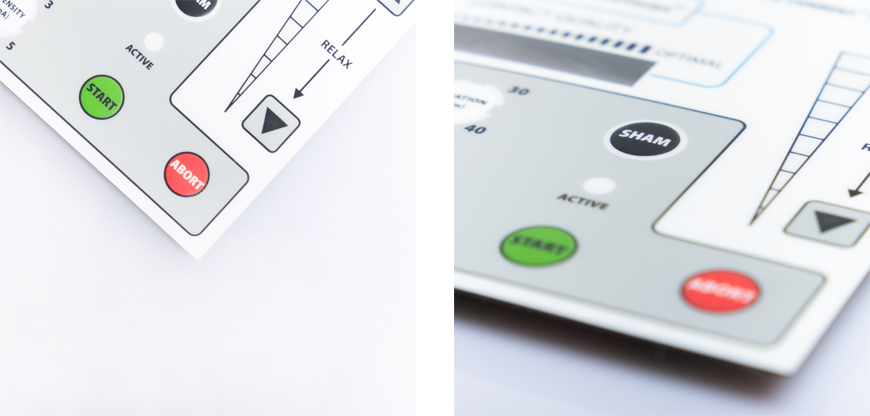
In the realm of technological advancements, the humble membrane switch has quietly revolutionized user interfaces. Among these, the Douglas membrane switch stands out as a remarkable innovation. This article will delve into the intricacies of Douglas membrane switches, tracing their evolution from their inception to their current state of technological superiority.

Understanding the Basics
A Douglas membrane switch is a type of user interface that relies on the principles of pressure-sensitive conductive layers to initiate electrical responses. In simpler terms, it's a thin, flexible, and durable keypad often found on various electronic devices, including remote controls, microwave ovens, and medical equipment.
Early Beginnings
The history of Douglas membrane switches dates back to the mid-20th century when engineers sought ways to create more reliable and user-friendly input methods for electronic devices. The first iterations were basic, with a limited number of functions, but they showed immense promise.
Advancements in Material Science
As material science advanced, so did the capabilities of membrane switches. The incorporation of polyester and polycarbonate films enhanced durability, while the introduction of adhesive layers made these switches easier to install.
From Monotony to Versatility
One of the significant breakthroughs in Douglas membrane switches was their transition from monotone designs to versatile and colorful interfaces. This shift allowed manufacturers to tailor switches to suit various industries and user preferences.
Enhanced Tactile Feedback
Over time, designers worked tirelessly to improve the tactile feedback of Douglas membrane switches. This led to the development of switches with responsive, click-like sensations, enhancing the user experience.
Cutting-Edge Technology
In the present day, Douglas membrane switches have reached a zenith in terms of technology and functionality. They are now equipped with LED backlighting, touchscreens, and even haptic feedback capabilities, making them indispensable in industries like medical equipment, aerospace, and consumer electronics.
Durability and Reliability
Modern Douglas membrane switches are not only feature-rich but also incredibly durable. They are resistant to environmental factors such as water, dust, and extreme temperatures, making them ideal for rugged applications.
Medical Equipment
In the medical field, Douglas membrane switches are widely used in devices like patient monitors and diagnostic equipment due to their reliability and ease of cleaning.
Aerospace
The aerospace industry relies on Douglas membrane switches for cockpit controls and instrument panels, where precision and durability are paramount.
Consumer Electronics
From television remotes to microwave ovens, Douglas membrane switches have become an integral part of our daily lives, offering convenience and dependability.
In conclusion, the evolution of Douglas membrane switches has been nothing short of remarkable. From their humble beginnings to their current state of technological superiority, these switches have transformed the way we interact with electronic devices. Their durability, versatility, and reliability continue to make them an indispensable component in various industries.
1. What sets Douglas membrane switches apart from traditional buttons?
Douglas membrane switches are thinner, more versatile, and offer enhanced tactile feedback compared to traditional buttons, making them a preferred choice for many industries.
2. Can Douglas membrane switches withstand harsh environments?
Yes, modern Douglas membrane switches are designed to withstand harsh environmental conditions, including moisture, dust, and extreme temperatures.
3. Are Douglas membrane switches customizable?
Absolutely! Manufacturers can tailor Douglas membrane switches to meet specific design and functionality requirements, making them highly versatile.
4. Do Douglas membrane switches require special maintenance?
No, these switches are easy to maintain and clean, making them ideal for applications in medical and food industries.